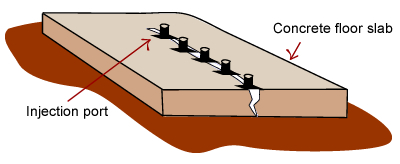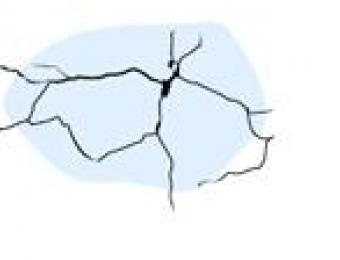
When is slab repair necessary?
When soil shifts and moves underneath a foundation, whether due to settling, reactive clay or other issues, it can lead to buckling and cracking of the slab. This has knock-on effects through the rest of the house; cracks can appear in walls internally and externally, floors can droop and sag in places or become detached from the walls and seepage can occur, with water drawn up through the cracks and into your floor.
When left unchecked, a foundation may continue to sink until it is no longer capable of sustaining the weight of the house, leading to structural collapse. To reverse the effects of soil shrinkage, the slab must be restabilised.
How is a slab restabilised?
This is typically accomplished using a piering system. Steel piers are hydraulically driven into the ground under the foundation through small holes which have been drilled in, and which are patched up afterwards. The piers are driven down to a depth where there is soil capable of bearing the load, and the slab rests on top of these. The system can be thought of as a little like underground stilts.
This method transfers the weight of the house from the slab to the stilts and down to the load bearing soil. The piers lift the slab back to its intended level too, restoring contact with walls and lessening cracks and gaps. Grout is pumped underneath to fill the spaces where the lifted slab has left a void, and to ensure that the concrete has a solid base to rest on.
Minor slab repairs
For minor repairs to a foundation, it is possible to fill small to medium cracks and gaps. It is recommended that these not be filled with concrete, as further shifting of the foundation may just re-open along these weak points. It's generally better to use an epoxy or resin based crack filler - these are much more flexible, are often stronger than concrete, and will not re-open under small shifts in weight. The filler can be applied using injection ports, which make getting the epoxy into the crack a relatively easy job. Once the epoxy has cured, it is possible to overlay it with a thin layer of concrete to smooth out any unevenness. Many of these fillers are quite reasonably priced and are user-friendly, meaning that you may be able to do the job yourself.





